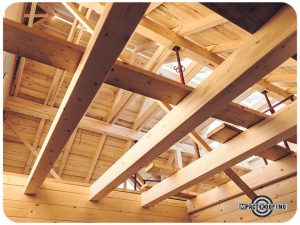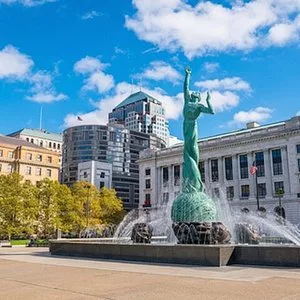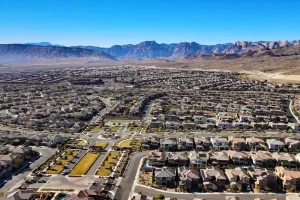Efforts Lead to More Sustainable NYC Living in 2023
Go Back To Previous PageMoving to NYC, with more than 8.38 million residents and a high cost of living, it is hard to imagine it being sustainable in any meaningful way. Therefore, it might come as a massive surprise that the city that never sleeps is one of the states with the lowest levels of carbon emissions.
The state is home to 6% of the U.S. population but only produces 3% of its greenhouse emissions. Therefore, this impressive feat is only possible thanks to the city’s and its residents’ ongoing efforts. Let’s look closely at a few of these efforts to help ensure that Big Apple continues toward increased sustainability.
We will review sustainable NYC Living and eco-friendly sustainable living education in NYC.
Sustainable NYC Living: Protecting Water Reservoirs
Over the past few years, the NYC Department of Environmental Protection and the Department of Health have come together to regulate and update a range of policies to protect freshwater sources in the state.
range of policies to protect freshwater sources in the state.
The city’s latest watershed management plan includes measures to address flood mitigation in watershed communities. The New York City Department of Environmental Protection worked efficiently on this project.
These measures are simple to improve the quality of water in NYC. And residents are also playing a role in freshwater preservation by not littering. Also, they focus on reducing the number of harmful chemicals used in homes and businesses.
Lowering the Carbon Footprint
NYC supports the nation’s efforts to become more eco-friendly by changing its internal systems and policies. The general public is the main driving force behind the city’s smaller carbon footprint.
In addition to riding bicycles, taking the subway, and opting to drive low-emission cars, New Yorkers are also trying to render their home more eco-friendly. For instance, they invest in solar energy and other eco-friendly systems, and solar cells generate electricity away from power plants.
According to the team at EcoWatch, homeowners must make informed decisions when it comes to being eco-conscious. Having trustworthy reviews and reports available makes choosing a solar solution that suits their lifestyle and budget more accessible. And this behavior results in a solar panel popularity boom.
One of the contributors to NYC’s sustainability drive is the growing application of public and private spaces as urban gardens. New Yorkers create green spaces across the city. For instance, this includes rooftop and balcony gardens and introducing natural elements into residential and commercial buildings.
Thanks to several farmers’ markets popping up all over the urban areas, local gardeners, farmers, and other eco enthusiasts develop more green spaces to grow produce. GrownNYC, a local organization dedicated to boosting NYC’s quality of life, initiated this trend.
Having a green commute
New York City mass transit helps keep over 17 million tons of greenhouse gases from entering the atmosphere yearly. Since the incorporation of Citi bikes into the streets of NYC, life was never the same. It is an excellent transportation medium, avoids crowds, doubles as exercise, and doesn’t pollute!
It’s a win-win for all, which is why the concept has succeeded. Another option for cars is Pedicabs. They are entirely people-powered, which makes them super green, and they are also relaxing, fun, and affordable.
Recycling is now mandatory.
Most buildings in NYC will impose a fine on owners/tenants who don’t follow recycling rules. Unfortunately, recycling is not as effective as it should be. According to the city’s Department of Sanitation, New York City recycles only about a fifth of its garbage — 18 percent from homes and about 25 percent from businesses.
The recycling program at the Department of Sanitation collects some 2,000 tons of recycling a day — bringing NYC a little closer to zero waste to landfills every day. They provide curbside collection and drop-off programs to eliminate plastic, paper, glass, and metal.
You can help reduce waste management by composting your food scraps. NYC has food scrap drop-off sites citywide or brown bins at each building where you can deposit your fruit and vegetable scraps, eggs shells, coffee grinds, and yard clippings to be composted and used to fertilize parks and gardens around the city.
And thanks to pressure from environmental activists, more restaurants and cafes no longer offer plastic straws by default. If you don’t need them, skip them.
Shop Greener
There have been different attempts to incentives shoppers to buy greener and cleaner. As of March 1, 2020, all plastic carryout bags (other than an exempt bag) became banned from distribution by anyone required to collect New York State sales tax. Stores and Grocery stores will charge anywhere from five cents to a dollar for a bag.
Farmers’ market is another excellent option to minimize plastic and containers, and it is sold directly to consumers with minimal equipment. GrowNYC runs markets all over the city on different days of the week, so no matter your schedule, you’re bound to be able to find one that works for you. Supporting urban farms is a fantastic way to help them bring great, responsibly produced food to local communities.
It is hard to think of NYC as a sustainable city.
However, thanks to the ongoing efforts of the city and residents alike, it continues to set an example for other large cities across the USA. In 2009, NYC became the first city to mandate building energy benchmarking. And since then, 26 localities have followed NYC’s example by implementing benchmarking for privately owned buildings.
While there is a long way to go, working with partners and communities across the state will help get us there. Governor Hochul and the New York legislature must put the environment first and ensure that the communities most vulnerable to climate change are at the forefront of their legislative agendas.
Moving to New York City and living in New York City can be sustainable, green, exciting, and thrilling!


